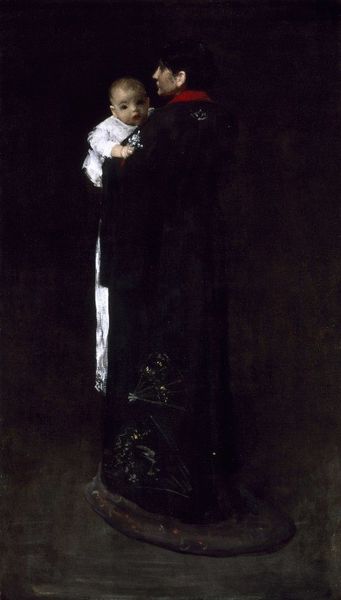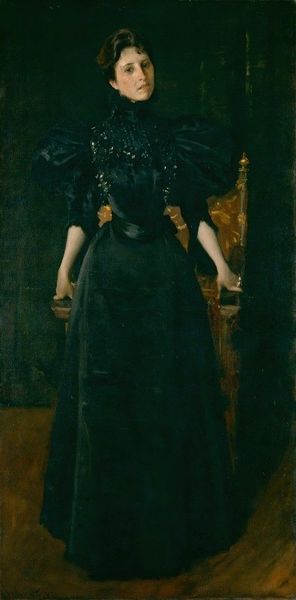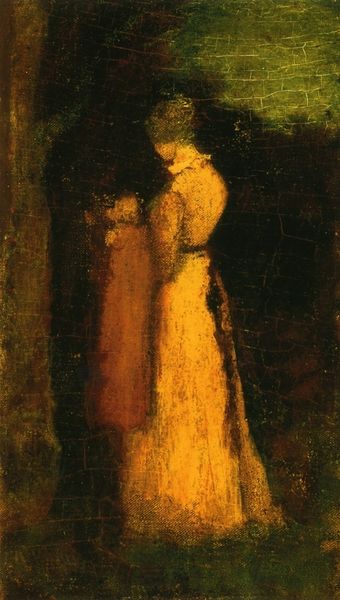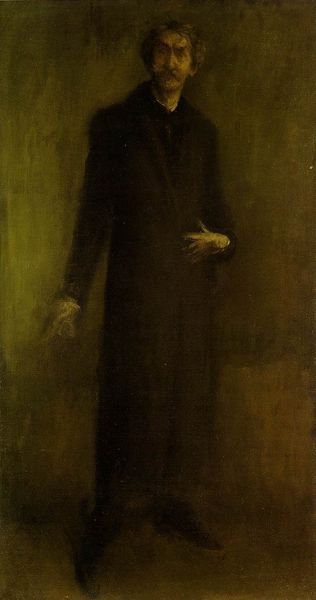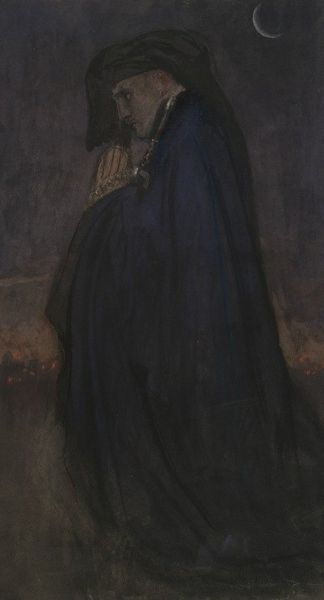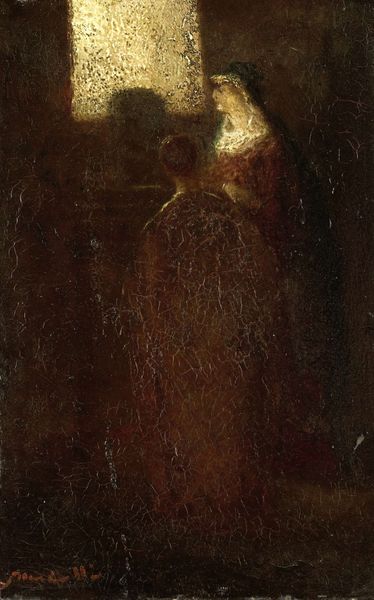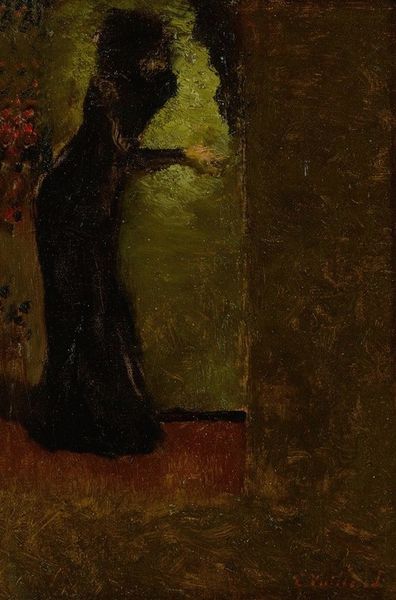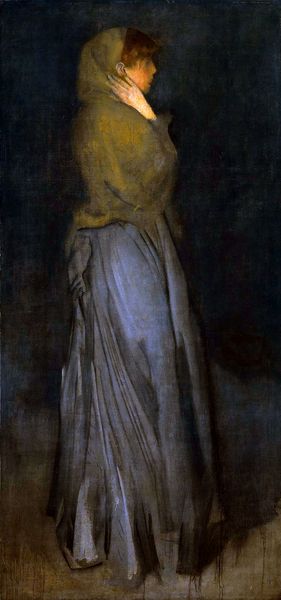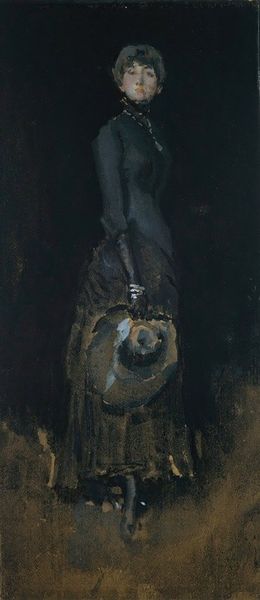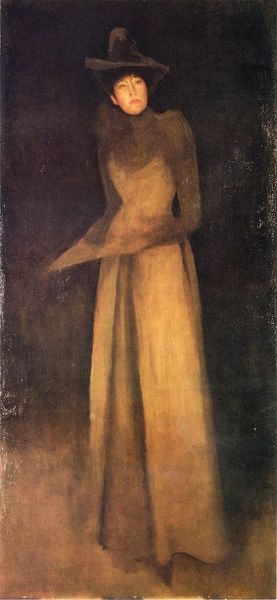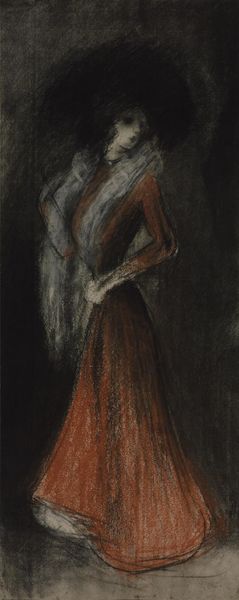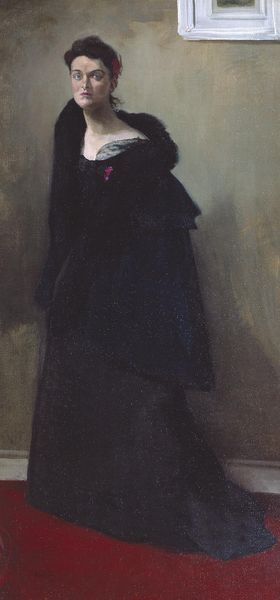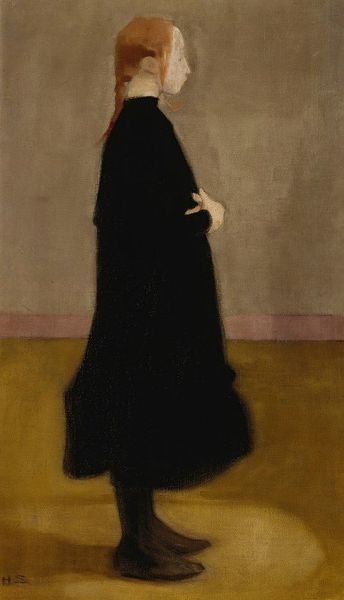
Copyright: Public Domain: Artvee
Editor: So, this is William Merritt Chase's "Copy of Velázquez’s Menippus," painted in 1882, using oil on canvas. It’s quite a dark painting, but the figure seems really present. How do you interpret this work? Curator: Considering Chase’s "Copy of Velázquez’s Menippus" through a materialist lens, it's important to consider why Chase chose to reproduce this particular work and how its meaning is altered through that reproduction. What statement is he making by re-producing it? Editor: Interesting. Well, given it is called a ‘copy’, wouldn’t its value be less, since it relies on the "original" labor of someone else? Curator: Not necessarily! Rather, we could look at how the means of artistic production have evolved from Velázquez’s time to Chase's. The social status of art-making, access to materials, and the rise of the art market all influence its meaning and consumption. Do you notice differences in brushwork, color palette, or composition? Editor: I do, actually! It seems more expressive, less restrained in a way. Were art academies pushing this expressive style at the time? Curator: Precisely! Now, considering those historical factors in his creation, how does Chase's copy differ materially and conceptually from Velázquez’s original, and what does that difference tell us about the changing landscape of art production? Editor: I suppose Chase elevates Velázquez’s "craft" to "art" by loosening up, showcasing the ‘artist’s hand,’ maybe to impress the academies and gain value in a changing art market? That's fascinating, I hadn't thought about it that way before! Curator: Exactly. By thinking about art as a product of labor, access, and consumption, we move beyond admiring skill and think about the bigger cultural picture, its context.
